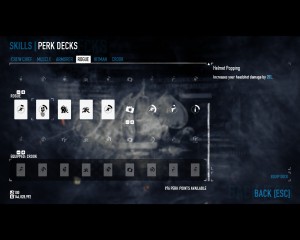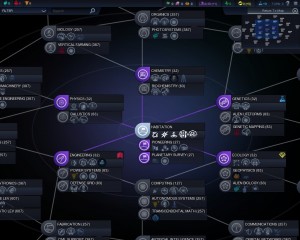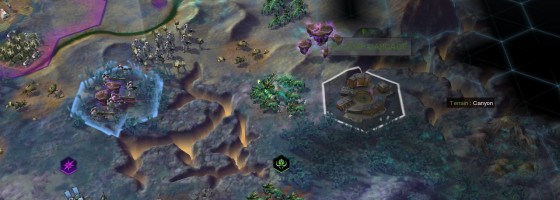The last time I looked at false choices in game design, I talked about options that were across the board weaker than your other available options rendering the choice meaningless. For today’s post I want to expand on that discussion with a talk about the same problem but from the opposite end of the spectrum when a choice is too good.
Positive False Choices:
The idea that a choice could be too good sounds like a weird complaint as you want the player to have options that are great. The problem is when the choice is so good that it becomes required due to how useful it is. Similar to our talk last time, these false choices punish the player for not choosing them while the previous post talked about options that punish you for choosing them.
To help designate the two types of wrong choices, we’ll refer to the positive examples as positive false choices and the negative ones as negative false choices for this post. A positive false choice can typically be seen in strategy guides or min-max suggestions where the person says that one choice should always be used or one set of instructions that work the best every time.
That last line is very important as that is what separates having the player decide between good options and having something as a positive false choice — If the choice is always the superior option then it can be considered a positive false choice as you always want to take it.

Payday 2’s new perk system has moved a lot of the popular tier bonuses to buffs that anyone can get access to now.
Here’s an example of this from Payday 2, before the skill overhaul each of the classes had bonuses that unlocked for putting X amount of points into respective skill trees.
The technician class had a bonus where you could get 25% more headshot damage for going up it. Obviously this was very useful on the higher difficulties and became the go-to tree for players just for this one option.
As you can see, this choice was superior because it was useful no matter what build you were, what weapons you used or how you played the game. And because this was always good, it became a positive false choice. What the developers did to fix that was to move it to the newly created perk system and now any player can easily get access to the bonus no matter what their play style is.
Since positive false choices are complete opposites of negative false choices, so is the best way to spot them while play testing your title. Unlike a negative false choice where every player will avoid it, a positive false choice is when every player will choose the same option every time no matter what. If you’re trying to make the player decide between choices, one shouldn’t always be the superior option. But figuring out a positive false choice can be difficult as there is more than one kind of choice in games based on how the games are played.
Required vs. Optional Choices:
The problem with trying to determine if a choice is a positive false choice is that depending on how your game is designed, some choices may be required simply by the nature of the mechanics. For instance in Payday 2, because the game has both stealth and loud levels there are some skills that are just plain required for effective stealth such as increase crouch speed and quieter enemy take downs.
In this case the stealth skills appear to be positive false choices because you need them in order to stealth effectively. However because they are a foundation of the stealth gameplay, you’re going to have to take them in order to make use of that specific mechanic. When something is specialized like that, then it’s not a positive false choice as the player is limiting themselves in some other aspect in order to make use of it. As a stealth player in Payday 2, I can’t repair drills as quickly or get the best armor due to my choices with build selection.
By doing this, it means that my skills range from being okay to great depending on the situation, which is what you want your choices to do. For an example of what not to do, we turn to Civilization Beyond Earth.
In the game, you can set up trade depots with nearby cities or stations for bonuses. The research is pretty cheap and the units don’t take that long to build. Once a supply chain has been established, you’ll receive constant bonuses from it with the only thing to do is restart it after a certain amount of turns. Here, the option to set up trade depots is always good no matter what the situation is and the onetime cost to research and produce is outweighed by the benefits they provide.

Some of the tech choices in Beyond Earth fell into the same trap as in previous Civ titles by making their unlocks so good that you’ll want to have them in every game, such as trade posts.
With the trade depots, I’m not limiting myself in some area by taking it, so they’re a win-win with no downsides and therefore the use of trade depots is a positive false choice.
Another sure sign that you have a positive false choice is if your player base says that they will not use certain items or choices to make the game harder. If a choice in your game is one that is so instrumental to play that people avoid it for a handicap, then you have a problem.
Choosy Choices:
Good game design is not about giving the player positive false choices but having them decide on what they feel is the best course of action. A good set of choices is about challenging the player to adapt to the gamescape and situations, not reading a guide and following a check list.
Usually the ways to fix a positive false choice are the same as a negative — either tweak the choice or tweak the other choices in the game. But you need to be careful as weakening a choice too much may make it too situational. If something is only good 1 out of 10 times and the rest of the time worthless, then you’re just creating another negative false choice.
Variety may be the spice of life, but you can have a case where there are just too many choices without any real value to them. If all your choices are based on incremental or not noticeable effects like +2 attack or +1 health, then the game will lack depth. It’s like being asked to choose between a high jump and a tall leap.
Good choice design is presenting the player a balanced number of options, so that there is variety while making them viable as well . No one choice should be superior/the worse and if you can nail the balance right, you’ll have one very interesting game.


